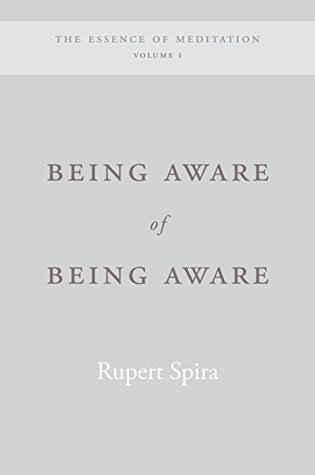More on this book
Community
Kindle Notes & Highlights
Likewise, although the mind continually moves – in the form of all thinking, imagining, feeling, sensing and perceiving – pure knowing, being aware or awareness itself, its sole substance and reality, never goes anywhere. In the form of the mind, awareness moves without moving.
The older we get, the more we feel that we have always been the same person. The sameness in ourself is the sameness of awareness.
The mind believes that awareness resides within the body and thus shares its limitations and destiny. Therefore, the mind believes that when the body is born, awareness is born; that when the body grows old and sick, awareness grows old and sick; and that when the body dies and disappears, awareness dies and disappears with it.
Deep sleep is not the absence of awareness; it is the awareness of absence. Thus, in its own experience of itself – and awareness is the only one that knows anything about itself – awareness is birthless and deathless. In other words, awareness is eternal.
Therefore, it would be more accurate to say that awareness must relax the focus of its attention, or disentangle itself from the objects of experience, thereby allowing its attention to return to or come to rest in itself. Thus, the highest form of meditation is not an activity that is undertaken by the mind. It is a relaxing, falling back or sinking of the mind into its source or essence of pure awareness, from which it has arisen.
The movement of the separate self towards its essence of pure awareness is, from the perspective of the separate self, felt as desire or longing; the pull of inherently relaxed, peaceful awareness on the contraction of the separate self is the attraction of grace.
Awareness of objects eclipses awareness of awareness.
Mind is the activity or creativity of awareness in which awareness itself seems to become entangled. Awareness seems to lose itself in its own creativity; it veils itself with its own activity.
Meditation is the disentangling of awareness from its own activity. In meditation the simple experience of being aware is extricated from everything that we are aware of.
When we come out of bright sunlight into a dark room, we cannot do anything with the mind to make the objects appear in the darkness. We just stay there and relax, and slowly the objects emerge. Meditation is similar. There is nothing the mind can do to find or know awareness, for the mind is a limitation of the very awareness for which it is in search. Anything the mind does is simply more of its own veiling activity. Meditation is the subsidence of the activity of mind and the subsequent revelation of the very essence of the mind – pure knowing or awareness – to itself. Only awareness knows
...more
The recognition of awareness – its recognition of itself – is not something new that is seen or known; it is a new way of seeing or knowing what is always and already present and in plain view. Enlightenment or awakening is not a new or extraordinary kind of experience. It is the self-revelation of the very nature of experience itself. Awareness cannot be discovered; it can only be recognised.
Being aware of being aware – awareness’s awareness of awareness – is a colourless, non-objective experience. It is an experience of the essence of the mind after it has been divested of its finite qualities. It is, as such, pure mind – awareness itself – knowing its own intrinsic, irreducible, indestructible essence. In the Zen tradition it is referred to as ‘our original face’.
We cannot become what we essentially are through any kind of practice. Through practice we can only become something that is not essential to us.
Having said that, the phrases ‘self-enquiry’ and ‘self-investigation’ are legitimate because this process is, in most cases, initiated by a question such as, ‘What is it that knows or is aware of my experience?’, ‘Where do thoughts come from?’, ‘What is the nature of the knowing with which all knowledge and experience are known?’, ‘Am I aware?’ or ‘Who am I?’ As the mind ponders these questions, it becomes progressively refined, travelling back through layers of objective experience, gradually purifying itself of all objective, limiting qualities.
Being aware of being aware – abiding in and as the self, resting in the ‘I am’, practising the presence of God – is the only form of meditation or prayer in which the ego, the apparently separate subject of experience, is not maintained. It is, as such, the highest form of meditation or prayer. It is the meditation or prayer for which all other meditations and prayers are preparations.


